Jack Vanarsky
«To represent immobility by movement, restfulness by restlessness, absence by presence, softness by hardness, continuity by discontinuity, silence by noise” Jack Vanarky, Métaphysique du quotidien [Metaphysics of everyday life]
Jack Vanarsky was born in 1936, in General Roca, Argentina, a small town in the north of Patagonia, where his family of Jewish Lithuanian and Bielorussian origins had settled. As a teenager, he moved to the capital to attend secondary school at the Colejio Nacional de Buenos Aires, and later studied architecture at the University of Buenos Aires. At the same time, he frequented the fine arts studios of Cecilia Marcovitch, Juan Carlos Castagnino, Antonio Berni and Lino Eneas Spilimbergo, and contributed articles and caricatures to opposition journals. At that time, in Latin America the legacy of Mexican muralism addressed the question of political art, Jack Vanarsky, in his production of drawings and paintings, was closer to an individual expresionism accompanied by a strong social criticism. In 1962, he visited several European countries: Spain, Italy, France, the Netherlands, Germany, Finland and Tchekoslovakia, after which he settled in Paris with his partner Cristina Martinez.
In 1965, Vanarsky produced his first mobile sculptures. From 1968 onwards, they are made of lamellae animated by a hidden mechanism, a system which he maintained, with adaptations, for the rest of his future work.

He writes: “I came to the conformation of my sculptures as a succession of topological slices. This slicing process is not, for me, a surgical operation, but rather a system of language. I decompose a shape into a series of profiles, a bit like, with all due humility, the impressionists used to decompose colour.”
The sculptures mysteriously attract the eye by the constant decomposition and recomposition of shapes, associated to “this feeling of elasticity in the oscillation” (Restany) created by their slowly ondulating movement.
In the catalogue of the exhibition at the Maison d’Amérique Latine, Paris, 1995, Pierre Restany writes : “(…) for more than thirty years, the animated sculptures of Jack Vanarsky exert on their spectators the rippling fascination of their mise en scène of the space-time of a given shape. The animation of the articulated plates triggers the inexorable slowness of a transe, which affects the two existential dimensions of the image: the amplitude of the animation time undermines its spatial coherence, without provoking its irremediable rupture.”
Vanarsky is also remarkable for the originality of his choice of subject matter, far removed from the abstraction of kinetic art. Subjects include parts of the body, footprints and handprints (1970-80), books, foliage, ropes (1980-1990), butterflies, mantlepieces, hands at work (2000), eroticism.
About his work from the 70’s, Jack Vanarsky, a frequent reader of detective novels, comments: “I am tracking down the traces, like Sherlock Holmes looking for give-away clues, to preserve them in time. Fragments of the floor or the wall, table or pillow, glass or mirror, which keep here the print of a hand, there the impression of a face, remains of gestures and looks, testimonies of an absent presence. What moves is not even anymore the representation of a character who may have moved, but the representation of his furtive passage.”
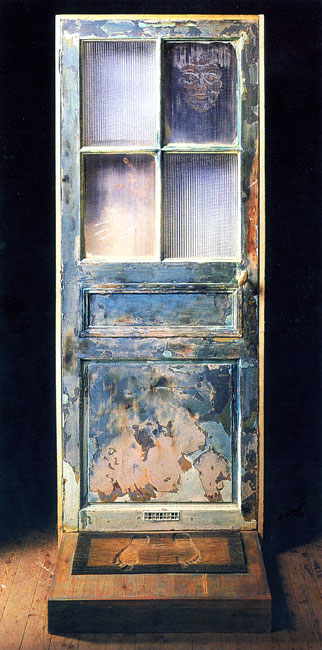
He is known for the peculiar transformations he carried out on certain works of important figures of Art history : Mondrian, Duchamp, Van Gogh, Munch, Bernini, or Topor, and for the correspondences he creates with the literary world, especially with the writers Borges, Kafka and Pessoa.
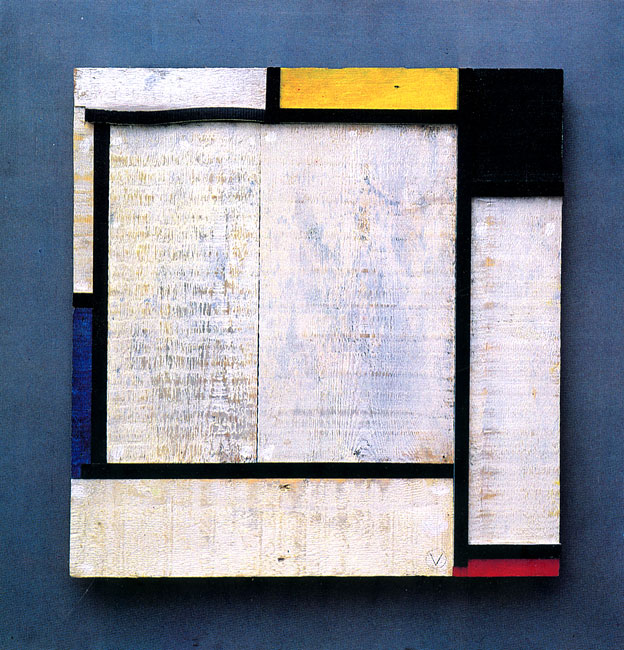
From 1970 on, there are regular exhibitions of his work in Europe, South America and the United States, and he participates in numerous international exhibitions and art fairs (see CV).
At the same time, he collaborates with the architect Wladimir Kalouguine, in several projects, in particular the Pasteur-Montplaisir residence complex in Angers (1972-75). Drawing on his experiences in architecture, he creates monumental sculptures in urban spaces, among them the “Pachamama” (1988), a fountain-sculpture in marble from Carrara, commissioned by the City of Ivry-sur-Seine.
In 1992, the Livremonde, which he conceived and constructed, is the symbol-sculpture of the French Pavilion at the Universal Exhibition of Seville. This giant book shows on its engraved and painted pages, fragments of the history of our civilization, from cuneiform writing to the computer screen, on which a quotation from Stephane Mallarmé, written in various languages, continuously scrolls: “Everything in the world exists in order to end up in a book.”

In 2002, he presents for the first time his installation “Kafka’s room”, commissioned for the exhibition “Metamorphoses de Kafka” at the Musée du Montparnasse, Paris. In a special geometry made of screens and doors, a set of objects — pages of writing, a bowler hat, a portrait, a notebook and quill, a chair, an enormous ear— suggest the unsettling universe of the writer and his working space.
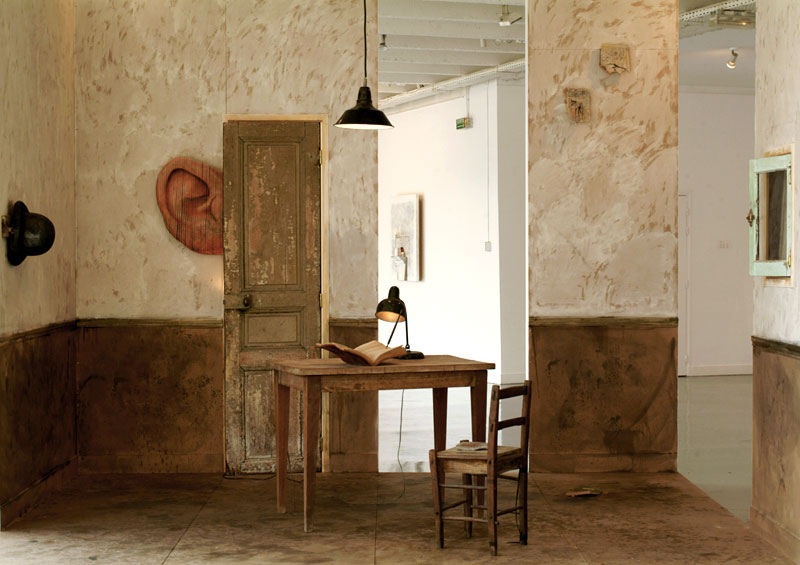
From 1990 on, Vanarsky becomes a member of Oupeinpo (Ouvroir de Peinture Potentielle) and Régent of the Collège de Pataphysique. Several of the graphic pieces and texts he conceived within Oupeinpo are published in the book Du potentiel dans l'Art [Potential in Art] (ed. Le Seuil, 2005), among them the « Projet de redressement de la Seine à sa traversée de Paris » [Project of straightening of the Seine in its crossing of Paris] —presented for the first time in the exhibition "Visions urbaines", Centre Georges Pompidou—, one example of his numerous works which combine humour and constraints. During live presentations of the Oupeinpo group, he performs happenings, which include « Le Très Grand Digrapheur », séance Ou-x-po, Tipi of the Centre Pompidou (1999), and the « Sacrifice humain », Etats Généraux du Poil, Palais de Tokyo, Paris, 2007.
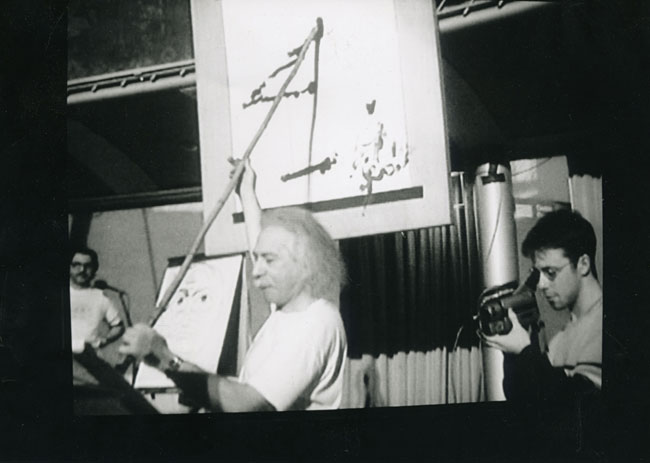
A film on Jack Vanarsky and his work, Animalamina, directed by Marie Binet, was released in 2007.
He has received several prizes and his works are found in numerous public and private collections (see CV).
Still working on several important new projects, Vanarsky passed away suddenly the 15th of February 2009. His remains are buried in the cemetery of Père Lachaise, Paris.
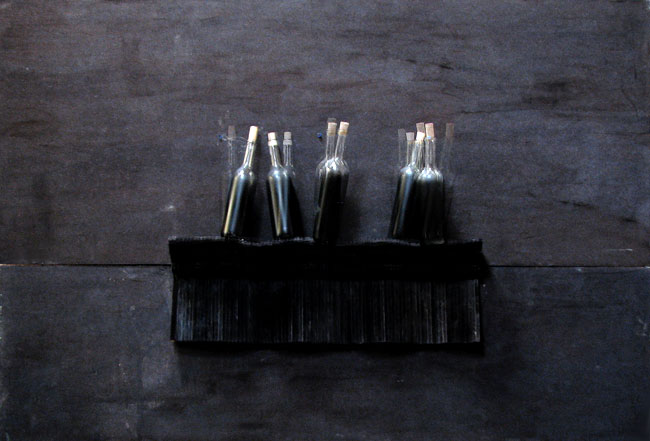
© Atelier Vanarsky 2012
